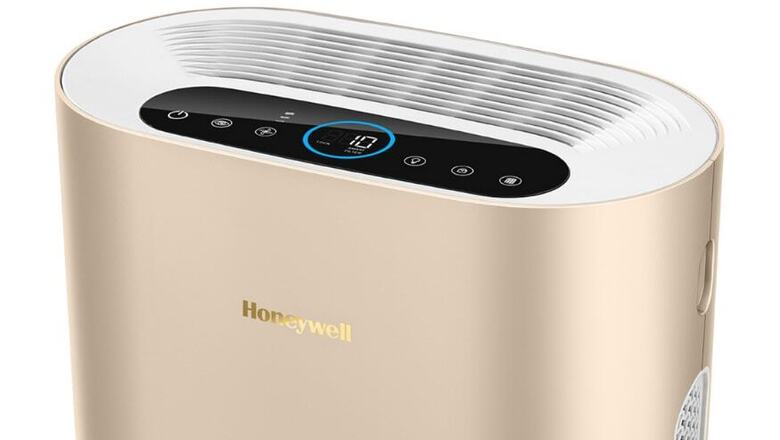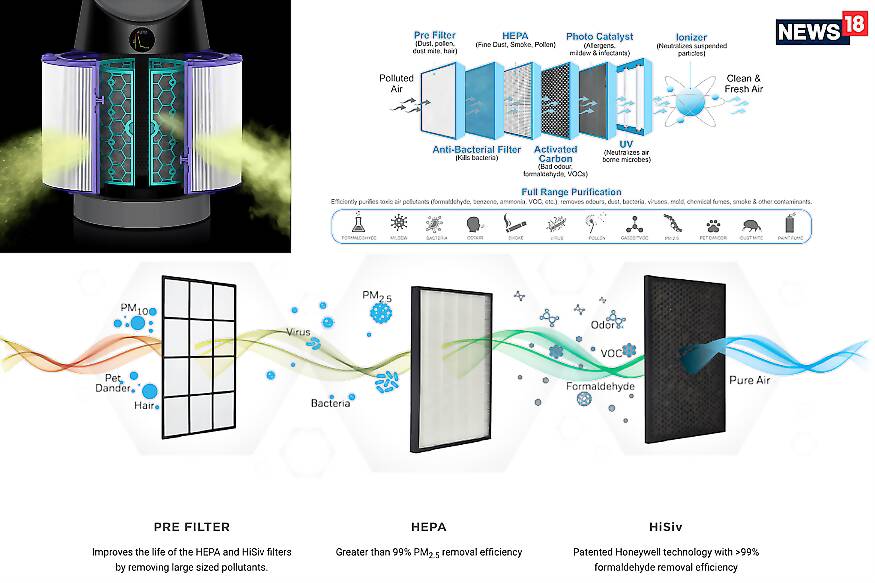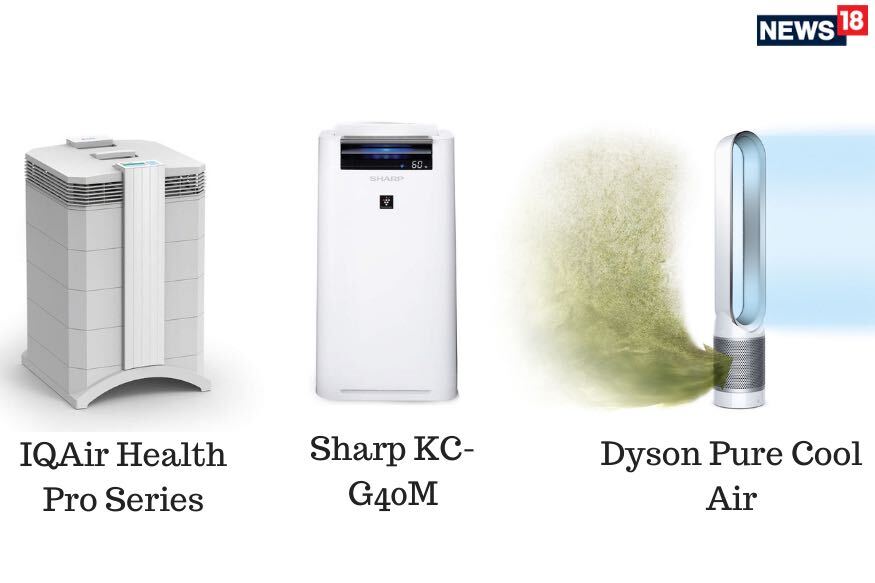
views
The polluted times we live in, air purifiers for homes are no longer considered a luxury. It has now become a necessity—pretty much as essential as food, water and air. We have just celebrated the festival of Diwali, and this usually ushers in the cooler temperatures of the winter months. With those temperature and atmospheric changes comes another big problem. Pollution. Air pollution. The air quality outdoors becomes worse since the pollution that is generated from various sources gets trapped because of differences in air pressure, moisture and wind speeds. We are constantly hearing reports of extremely poor AQI levels in most Indian cities, irrespective of the vehicular density (as the general perception is). When the same poor-quality air streams inside our homes and remains trapped, we need a solution to deal with the dangerous cocktail brewing inside our homes. The general perception is that the air inside our homes is clean and fresh. But, it isn’t. The outdoor air combined with pollutants and allergens such as residues, fungal spores, indoor smoke, paint fumes, varnishes, pet dander, etc., are now causing what is known as the Sick Building Syndrome. While your house may look clean because you dust it nicely every day, chances are it still has a very high concentration of pollutants.
In May 2018, a World Health Organization (WHO) report suggested that more than 4 million people die premature deaths because of indoor air pollution. Household air pollution causes stroke, ischaemic heart disease, chronic obstructive pulmonary disease (COPD) and lung cancer. Of these premature deaths because of indoor air pollution, 27% are because of pneumonia while 18% is because of stroke and 8% because of lung cancer, to name a few.
If you already haven’t, it may be time to buy an air purifier for your home. However, how you do pick the perfect air purifier for your home specifically? It is brands galore, as we speak. Philips, Honeywell, Sharp, Dyson, Blueair, Samsung, Atlanta Healthcare, IQ Air and Xiaomi to name a few. They all claim to be the best, all specify really powerful cleaning performance and most look the same too. Here are some tips to remember.
Size and space: Has to fit like a glove
An air purifier has to be the right fit for the room space. The best way of going about it is to match the size of your room and the coverage area of each purifier—this is usually mentioned in square feet (sq. ft). Buying one that is too small for your room will mean that the purifier will be unable to clean the air completely and also keep it clean constantly. It is better to err on the side of caution, and get one that is slightly larger in capacity. Brands have different air purifier sizes in their range. For instance, a Philips 1000 Series (around Rs7,400) air purifier is ideal for a small bedroom or a study room, a larger 2000 Series (around Rs14,000) purifier works best in larger rooms such as a bedroom or a living room, while the even larger 3000 Series (around Rs23,000) is designed for big spaces such as a combined dining and living room.
Air purifiers work in the room where they are kept. If you keep it in the living room and expect it to also be able to clean the air in the bedroom, that will not happen.
Filters: These are the heart and soul
Air purifiers have HEPA (high-efficiency particulate arrestance) filters. This is the thick filter that captures airborne particles, seen and unseen. Many purifiers have additional filters too, such as a pre-filter to capture larger dust particles, and activated carbon filters, to capture allergens that may otherwise get through the HEPA filter. The more filter layers there are, the better.
The quality of filters defines the performance of an air purifier for homes. While it’s impossible to judge how efficient an air purifier is till you actually use it, there are still some giveaways as to what awaits you. Hold up the HEPA filter to see the thickness, and you will get a fairly good idea about whether it can do the job or not. Similarly, the texture and quality of the activated carbon filter offers a good idea of the potential performance. If it feels flimsy or too thin, it is probably best to avoid it.
There are some air purifiers that also have additional stages of filtration, such as a UV filter. The Atlanta Healthcare Beta 350 Viral Guard (around Rs9,999) for instance, is one of the few purifiers that offers this feature. While most filter layers will catch the airborne impurities, there is always the added reassurance that any airborne viruses, bacteria and germs that manage to evade all filters will be caught out by the UV step.

If there is a pre-filter to collect the larger particles of dust, this will significantly improve the operating life of the HEPA filter and activated carbon filters. The prefilter has the primary task of stopping larger dust particles and capturing these before they get lodged into the HEPA filter or the activated carbon filters improves their efficiency as well.
Pre-filters are easily washable, while HEPA filters cannot be washed and need to be replaced. Depending on the brand and air purifier model, replacement HEPA filters can cost upwards of Rs2,000 and usually last between 6 months to 12 months if you use the purifier for around 12 hours a day. That said, a how dusty and polluted the environment is around your home, will also have a huge bearing on the overall filter life.
Power: The more, the better
A lot of manufacturers claim very high clean air delivery rates (CADRs), but there really is no industry standard. However, if you have a very small-sized purifier claiming a CADR rate comparable to those which are double in size, that should perhaps raise a red flag—the laws of physics don’t necessarily change, no matter how good the design or the tech or the size of the fan throwing out clean air. An air purifier needs to be able to draw in and throw out at least a certain amount of air to fulfil the CADR promise.
The thumb rule with all air purifier purchases is simple—more is better. Particularly if you want to cover a large area. For instance, the Samsung AX7000 (around Rs32,000) is essentially two air purifiers in one. It has two sets of filters stacked vertically, and the can take in double the dirty air compared with most other air purifiers, and that means the air quality in larger rooms improves much quickly—and stays that way even if there is activity and an occasional stream of outdoor air. This will also be more efficient than having multiple air purifiers running in the same space.

Placement: It needs space
Where you place a home air purifier is also very important. Most purifiers have air intakes either on the sides or at the back. Either way, you must leave some space on all sides of the air purifier for it to be able to efficiently take in the unclean air of the room and filter it. Do not push up the purifier against a wall or pieces of furniture.
Then there is the small matter of the air outlet vents. Certain purifiers have the clean air vents on the side. This may work well for the most part, but if you have a cramped layout at home, the clean air dispersion will get hampered as a result. The fine differences in design are well explained by the Blueair Sense+ (around Rs28,000), the Honeywell Lite (around Rs10,000) and the Sharp Plasmacluster air purifier (KC-G40M; around Rs33,000 with built-in humidifier). The Sense+ has an air vent on the side, the Lite has an air vent that disperses air outwards on the sides and the Sharp KC-G40ME has a air vent that disperses air upwards and a forward vent that brings the air in your immediate direction as well. The side vent is fine if you have enough space around the purifier for the clean air to disperse and spread through the room, while the vents that disperse air outwards or upwards are a better fit if there is a lack of space. Basically, most homes.

Some purifiers, such as the Dyson Pure Cool range (Rs29,900 onwards) have a rather unique design that allows for them to have a 360-degree filter. This means they can take in much more air from all sides, and aren't usually hampered by the placement of furniture or walls in the near vicinity.
AQI: Know the number
A lot of air purifiers have digital air quality displays, which are updated real-time. Some don’t. Those that don’t rely on a colour coded theme to tell you about the air quality—red or orange indicating hazardous, green indicating acceptable and blue indicating healthy, for instance. The Honeywell AirTouch A5 (around Rs9,000) does not have a digital air quality display whereas the Honeywell AirTouch i8 (around Rs16,000). This should not have a bearing on your buying decision, unless you are adamant about knowing the exact quality stats of your room. The data that purifiers display in terms of air quality is based on a series of readings from various sensors they have integrated, and we have verified these with third-party external air quality monitors—they are always within range of each other.
The more advanced sensors in the Dyson Pure Cool range of purifiers also give out data for PM 2.5, PM 10, VOCs and NO2, for instance, on the purifier's own display. This is unique, since a lot of purifiers can detect and monitor PM2.5 and VOCs, but not the other airborne ingredients that Dyson's purifiers can.


















Comments
0 comment